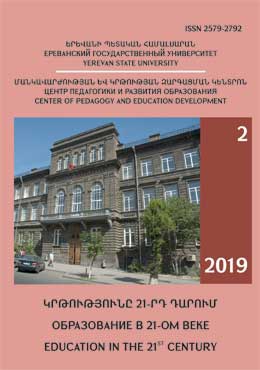REPRESENTATIONS OF THE AGE PERIODIZATION OF CHILDHOOD IN THE XX-XXI CENTURIES
DOI:
https://doi.org/10.46991/educ-21st-century.v2i2.10774Keywords:
age periodization, age stages, physical development, physical fitness, healthAbstract
The article under consideration analyzes the concept of age periodization of the twentieth and twenty-first centuries. Nowadays the issues of the state of children's health are relevant: physical and mental development, physical fitness, adaptation of children to changing environmental conditions, as well as the issues of valeological education of the young generation. According to scientific research over the past decade, the frequency of detecting chronic diseases, functional disorders, as well as cognitive impairment among children of different ages has increased, and the indicators of the child’s physical development have significantly worsened. In this regard, one of the key points in changing the situation is the knowledge and understanding of the functioning of the child’s body at each age stage of its development. The actualization of the issues of anatomical, physiological and mental signs that are characteristic for different age stages of child development (age periodization) and issues of accelerated physical and partly mental development in childhood and adolescence (acceleration) will help to identify possible causes of the disease and to prevent them. The studying of the opinions concerning age-related changes of children will help to evaluate the modern approaches of age-related periodization in pedagogy. In the twentieth century, the issues of child development took a leading position among the classical areas of interdisciplinary research. This issue is becoming relevant in modern society, because childhood is the initial stage of the origin, formation, and development of physical qualities, personal characteristics, behavioral patterns. A strong opinion has been formed in pedagogy and psychology over the past 50 years that the idea of a child and its age characteristics are a cultural and historical phenomenon. We set as a goal of this work to define the age limits of childhood, as well as to analyze the knowledge and prescriptions for each period of childhood.
References
Список использованной литературы:
Большой толковый словарь русского языка / под. ред. С.А. Кузнецова. Санкт-Петербург: Норинт, 2000 . – 1536 с.
Белик А.А., Психологическое направление в этнологии США / А.А. Белик Культура и личность. Психологическая антропология. Этнопсихология. Психология религии. Москва: Рос. гос. гуманит. ун-т., 2001. – 378 с.
Выготский Л.С., Собр. соч. в 6 т. / под ред. А.М. Матюшкина. Москва: Педагогика. Т.3. Проблемы развития психики, 1983. – 368 с.
Выготский Л.С., Педагогическая психология / Л.С. Выготский. Москва: Астрель, 2005. – 289 с.
Латышина Д.И., История педагогики (История образования и педагогической мысли): учеб. пособие. Москва: Гардарики, 2005. – 603 с.
Очерки истории педагогической науки в СССР (1917–1980) / под. ред. Н.П. Кузина, М.Н. Колмаковой. Москва, 1986. – 288 с.
Очерки истории школы и педагогической мысли народов СССР (1941–1961) / под. ред. Ф.Г. Паначина, М.Н. Колмаковой, З.И. Равкина. Москва, 1988. – 272 с.
Панченко А.А., Отношение к детям в русской традиционной культуре / Оте¬чест-венные записки №3, 2004. – С. 31-38.
Крылов А.А. Психология / А.А. Крылов. Глава 15. Возрастные периоды развития человека. Москва: Проспект, 2005. – 752 с.
Прищепа И.М., Возрастная анатомия и физиология / И.М. Прищепа. Москва: Медицина, 2006. – 542 с.
Словарь русского языка С.И. Ожегова / под. ред. Н.Ю. Шведовой. Москва: Советская энциклопедия, 1973. – 846 с.
Шаповаленко И.В., Психология развития и возрастная периодизация /
И.В. Шаповаленко. Москва: Юрайт, 2015. – 576 с.
Downloads
Published
How to Cite
Issue
Section
License

This work is licensed under a Creative Commons Attribution-NonCommercial 4.0 International License.

